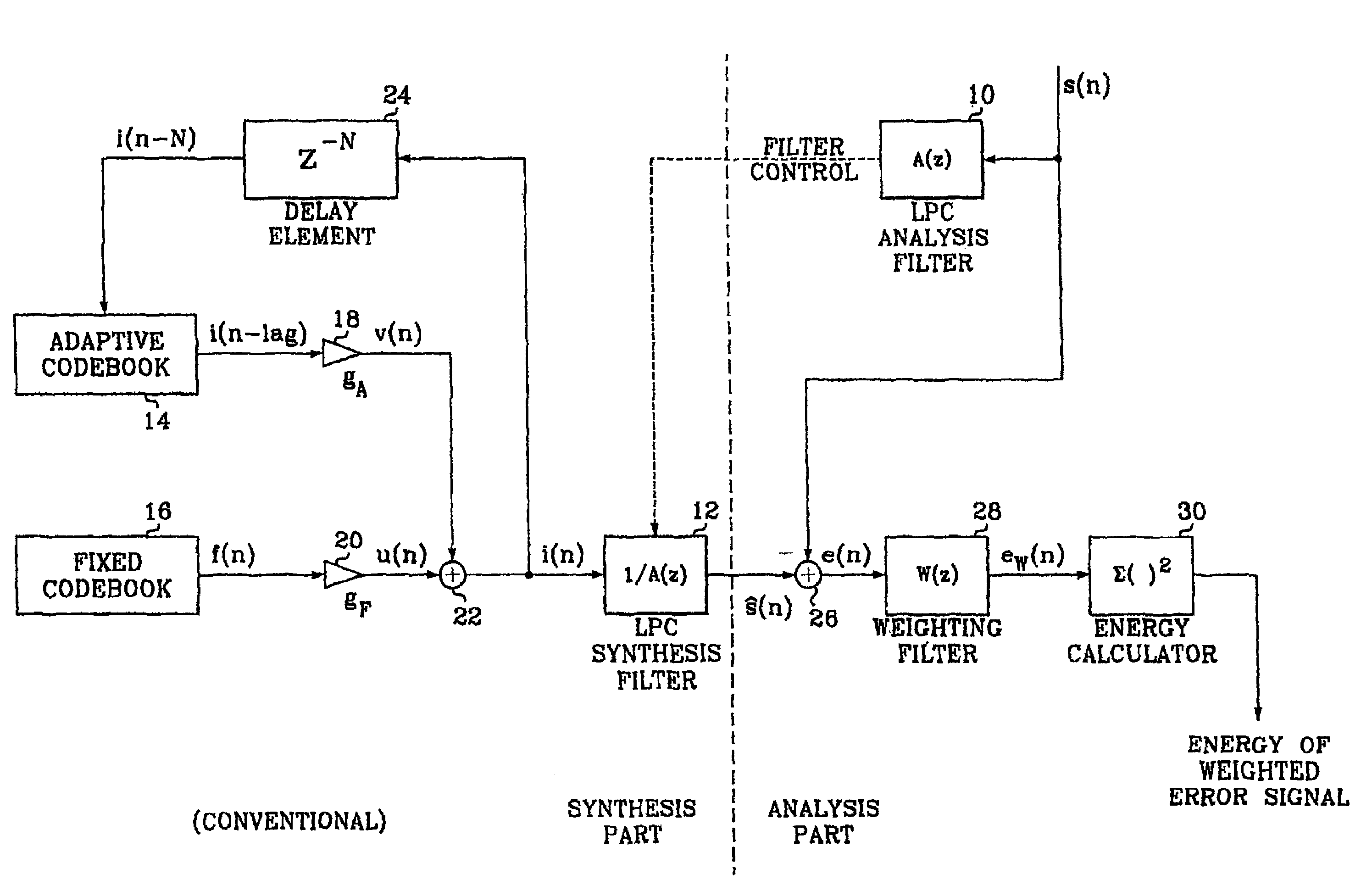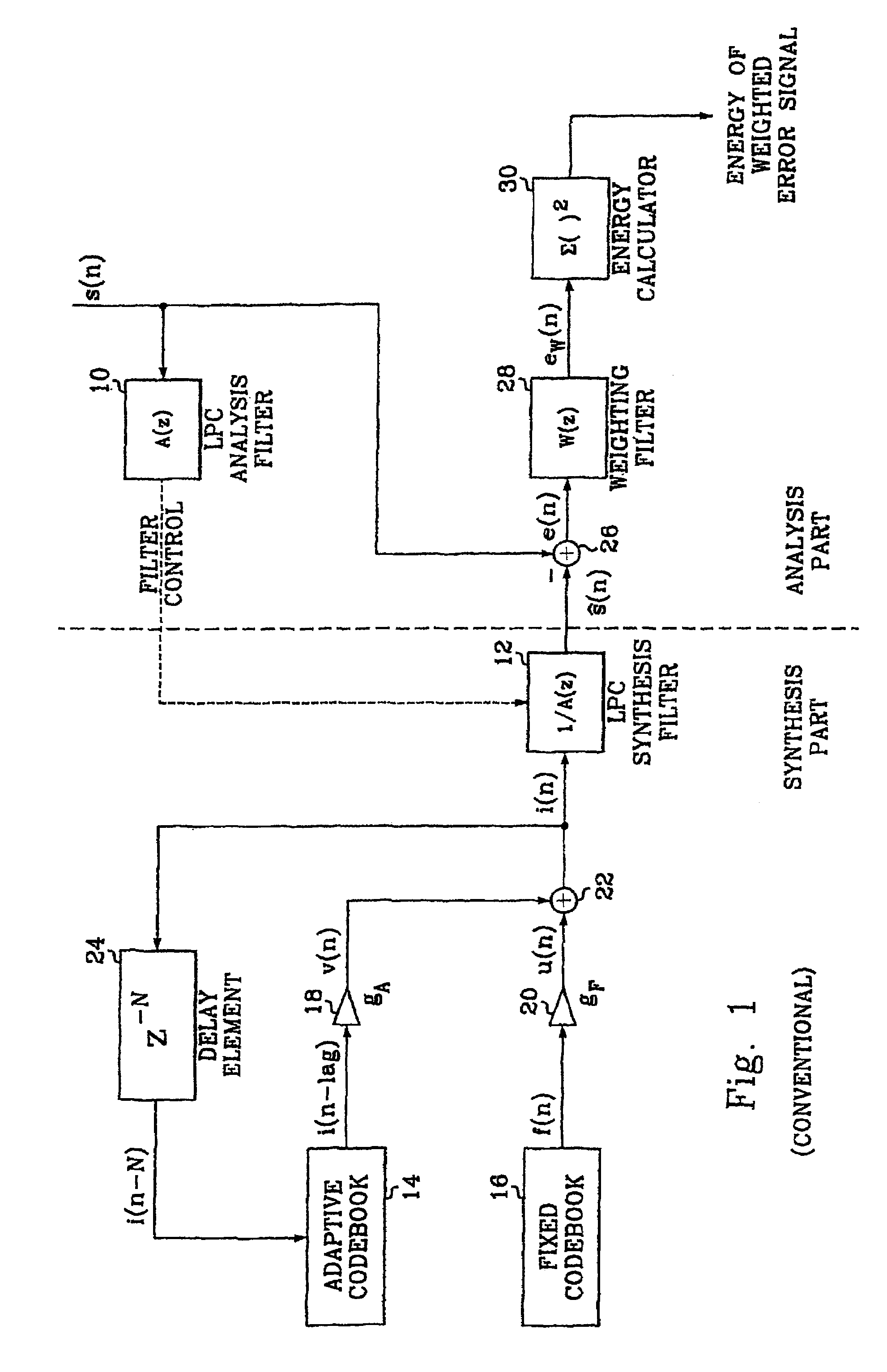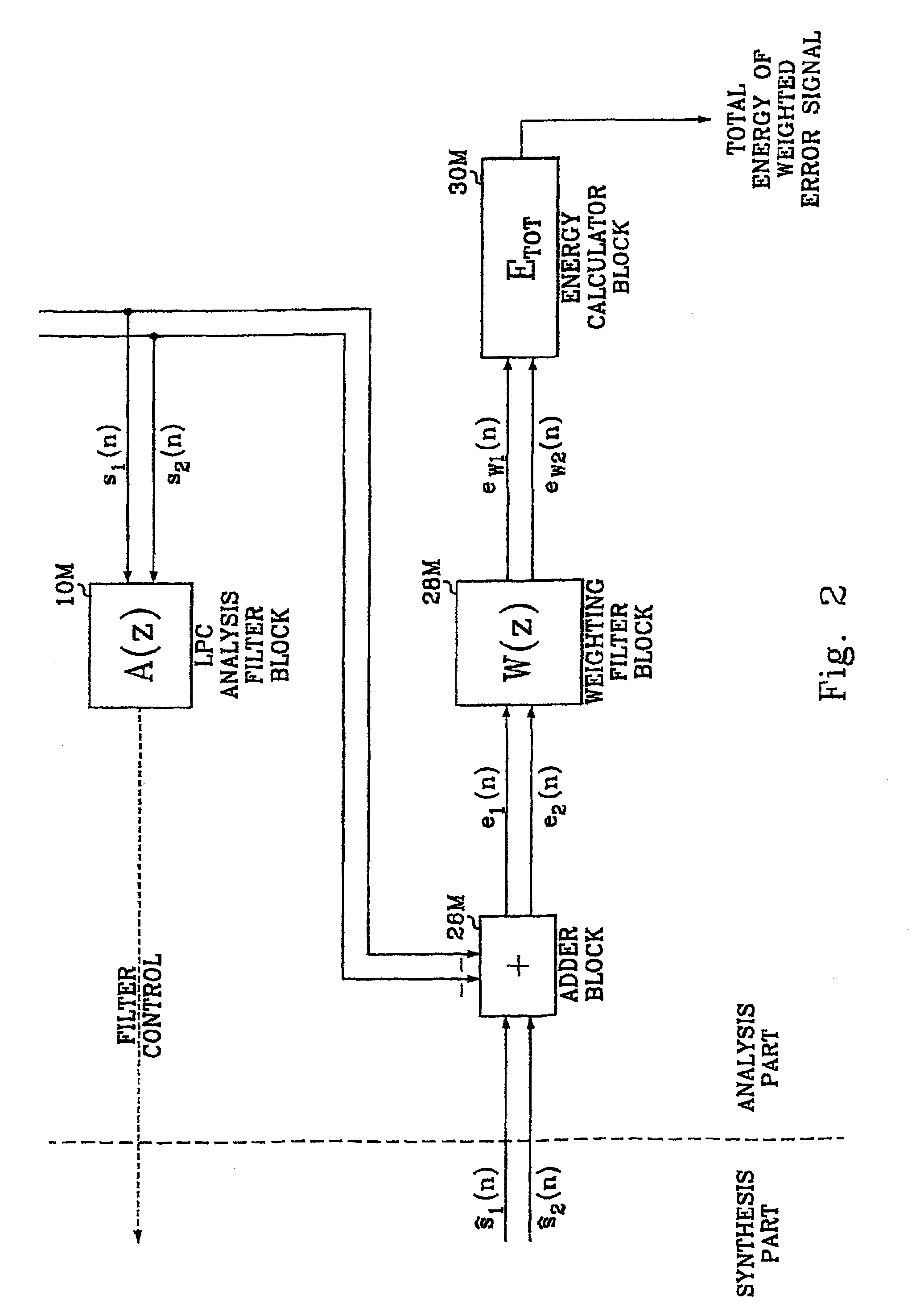Multi-channel signal encoding and decoding
a multi-channel signal and encoding technology, applied in the field of encoding and decoding of multi-channel signals, can solve the problems of low mono-quality, low available bitrate, and low quality of both channels, and achieve low gross bitrate and high mono-quality. , the effect of reducing the gross bitra
- Summary
- Abstract
- Description
- Claims
- Application Information
AI Technical Summary
Benefits of technology
Problems solved by technology
Method used
Image
Examples
Embodiment Construction
[0020]In the following description the same reference designations will be used for equivalent or similar elements.
[0021]The present invention will now be described by introducing a conventional single-channel linear predictive analysis-by-synthesis (LPAS) speech encoder, and a general multi-channel linear predictive analysis-by-synthesis speech encoder described in [3].
[0022]FIG. 1 is a block diagram of a conventional single-channel LPAS speech encoder. The encoder comprises two parts, namely a synthesis part and an analysis part (a corresponding decoder will contain only a synthesis part).
[0023]The synthesis part comprises a LPC synthesis filter 12, which receives an excitation signal i(n) and outputs a synthetic speech signal ŝ(n). Excitation signal i(n) is formed by adding two signals u(n) and v(n) in an adder 22. Signal u(n) is formed by scaling a signal f(n) from a fixed codebook 16 by a gain gF in a gain element 20. Signal v(n) is formed by scaling a delayed (by delay “lag”) ...
PUM
 Login to View More
Login to View More Abstract
Description
Claims
Application Information
 Login to View More
Login to View More - R&D
- Intellectual Property
- Life Sciences
- Materials
- Tech Scout
- Unparalleled Data Quality
- Higher Quality Content
- 60% Fewer Hallucinations
Browse by: Latest US Patents, China's latest patents, Technical Efficacy Thesaurus, Application Domain, Technology Topic, Popular Technical Reports.
© 2025 PatSnap. All rights reserved.Legal|Privacy policy|Modern Slavery Act Transparency Statement|Sitemap|About US| Contact US: help@patsnap.com



